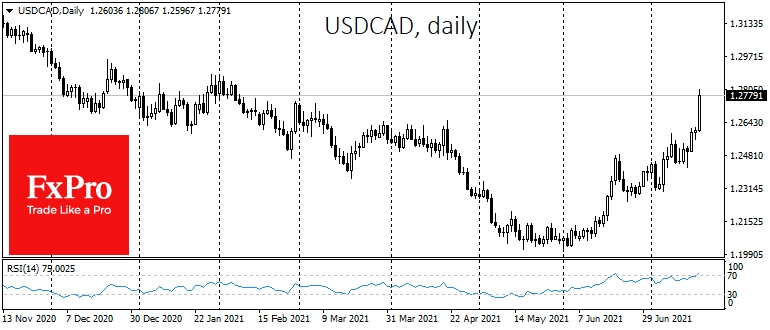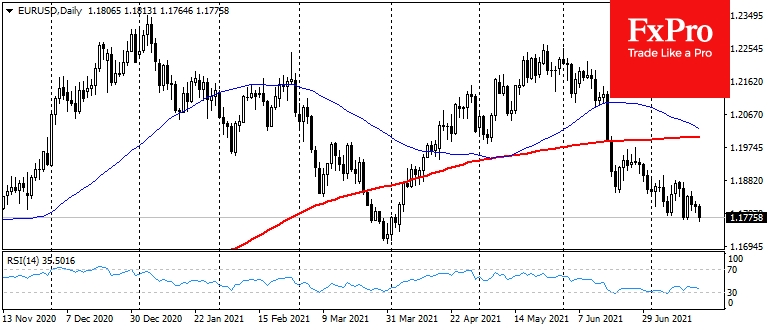The markets closed last week with a sell-off, which is developing at the start of the new week's trading. Japan's Nikkei 225 is down over 1.3%, and Shanghai's Hang Seng is down about 2%, trading at weekly lows, below the round 10,000 level.
Short-term investors and traders should be prepared for the safe-heaven bets to gain momentum in the near term as overly optimistic expectations have already been built into the prices. The most optimistic scenario rarely materialises, forming the basis for corrective pullbacks.
By the end of last week, the ratio of fell to grown stocks in NYC was above 2 to 1, often interpreted as a near-panic sell-off. However, it is hard to talk about a 0.8% decline in indices that way. Right now, all traders' attention should be on whether we will see another rush of buyers or whether the current bulls have done all they can do.
It is especially frightening those markets are falling with robust macroeconomic data, better-than-expected reports, and assurances from the Fed and other central banks that there is no rush to roll back macroeconomic stimulus. The main reason cited for the pressure is the emergence of more pockets of coronavirus, which risks undermining the return to normal life.
Technical analysis remains on the side of the bears. A divergence has formed between the charts and the RSI for the key US indices. In addition, the latter is coming down from the overbought area, signalling a corrective pullback.
The currency market is also dominated by a pull into defensive assets. The USD/CAD has strengthened by 1.2% today, to the highs since March, gaining methodically since early June. Much of this pair growth was despite heightened gold prices and high oil prices, suggesting a strong pull into the USD on the American market.
The same conclusion comes to mind when looking at AUD/USD, which this morning fell to its lowest values since December. Meanwhile, the flagship currencies - EUR/USD, GBP/USD, USD/CNH - remain within established ranges.
We have repeatedly noted that the dynamics of the Aussie and the Loonie often lead to market trends. If so, the EUR/USD's struggle for 1.1800 may be lost by the single currency already this week. Traders should be patient, though, as the ECB will hold its regular meeting on Thursday, after which the pair can make a final choice about the direction for the coming weeks.
Increased traction in the dollar, linked to market worries rather than US economic expansion, is often accompanied by a sell-off, which we might witness as early as this month.
The FxPro Analyst Team
Which stock should you buy in your very next trade?
With valuations skyrocketing in 2024, many investors are uneasy putting more money into stocks. Unsure where to invest next? Get access to our proven portfolios and discover high-potential opportunities.
In 2024 alone, ProPicks AI identified 2 stocks that surged over 150%, 4 additional stocks that leaped over 30%, and 3 more that climbed over 25%. That's an impressive track record.
With portfolios tailored for Dow stocks, S&P stocks, Tech stocks, and Mid Cap stocks, you can explore various wealth-building strategies.
